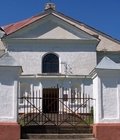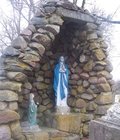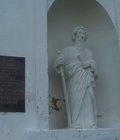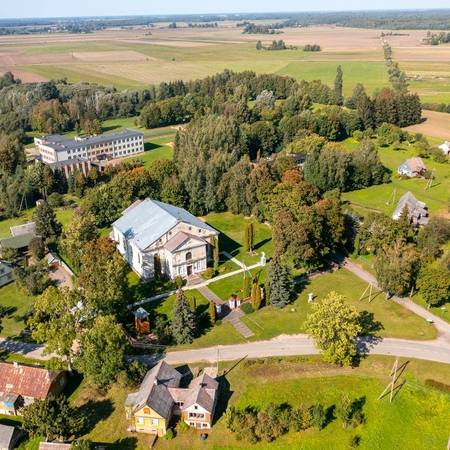St. Hyacinth Church is located in Kupiškis district, in Skapiškis town. The first church was mentioned in 1519. Skapiškis parish church had only 2 peasant yards in the 16th century. Stanislovas Skopas donated more than 22 voloks of land with the Biliūnai and Kreipšiai villages to the church in 1555. Later documents indicate that a brick church was built in 1555. Skapiškis chapel is mentioned only in 1669. Skapiškis church is not mentioned at all in the visitation records of the Vilnius Diocese from 1674 to 1677. It is likely that it was appropriated by evangelical reformers. Kreipšiai village was returned to the church around 1684. Canon Juozapas Domininkas Puzinas from Vilnius served as a pastor and gave Lithuanian sermons in Skapiškis from 1720 to 1740. Soon he became the bishop of Livonia and together with his brother Mykolas settled the Dominicans in Skapiškis in 1750. They donated 137 voloks of land to the monastery in 1750. A Dominican church was built in 1756. There was a parish school since 1775. The construction of the monastery began in 1790 and lasted more than 20 years. The wooden Dominican church burned down in 1806. The Dominicans built the present brick church in 1819. The church porch was made of wood in 1797. A new church porch was built by 1813. The Dominicans owned Skapiškis town and Kurkliai folwark with Beštupis, Eičionys, Laibiškiai and Tvirai villages in 1832. The Russian authorities closed the monastery, expropriated the palace and turned it into barracks, and turned the church into a warehouse in 1832. The Dominican church was given to the Catholics and it became a parish in 1858. The pastor Dominikas Žukas was arrested after the uprising of 1863. The monastery building was no longer in use after the soldiers moved out of it around 1875. A pro-gymnasium was established there in 1924 only. The Germans demolished the old parish church during the First World War. The new church was also damaged. 5 bells were taken to Russia. In the concern of the pastor Mykolas Prijalgauskas the church was repaired and its roof was covered with tin in 1923. The pastor Nikodemas Kasperiūnas painted the interior of the church in 1936. The presbytery burned down and the church was damaged during the Second World War. The latter was repaired after the war. The palace of the former monastery was demolished by the order of the authorities. There is a story that during the war, while the priest was praying in the church, one bomb hit the church, but did not explode. The place where the bomb broke the floor was covered with tin, which people never stepped on during the service. The bomb was not removed from the church until about 50 years later.
The church has elements of Classicism style. It has a rectangular plan and no towers. The interior is divided into 3 naves. The vaults of the central nave are cylindrical. The fence of the churchyard is made of stone.














Reviews